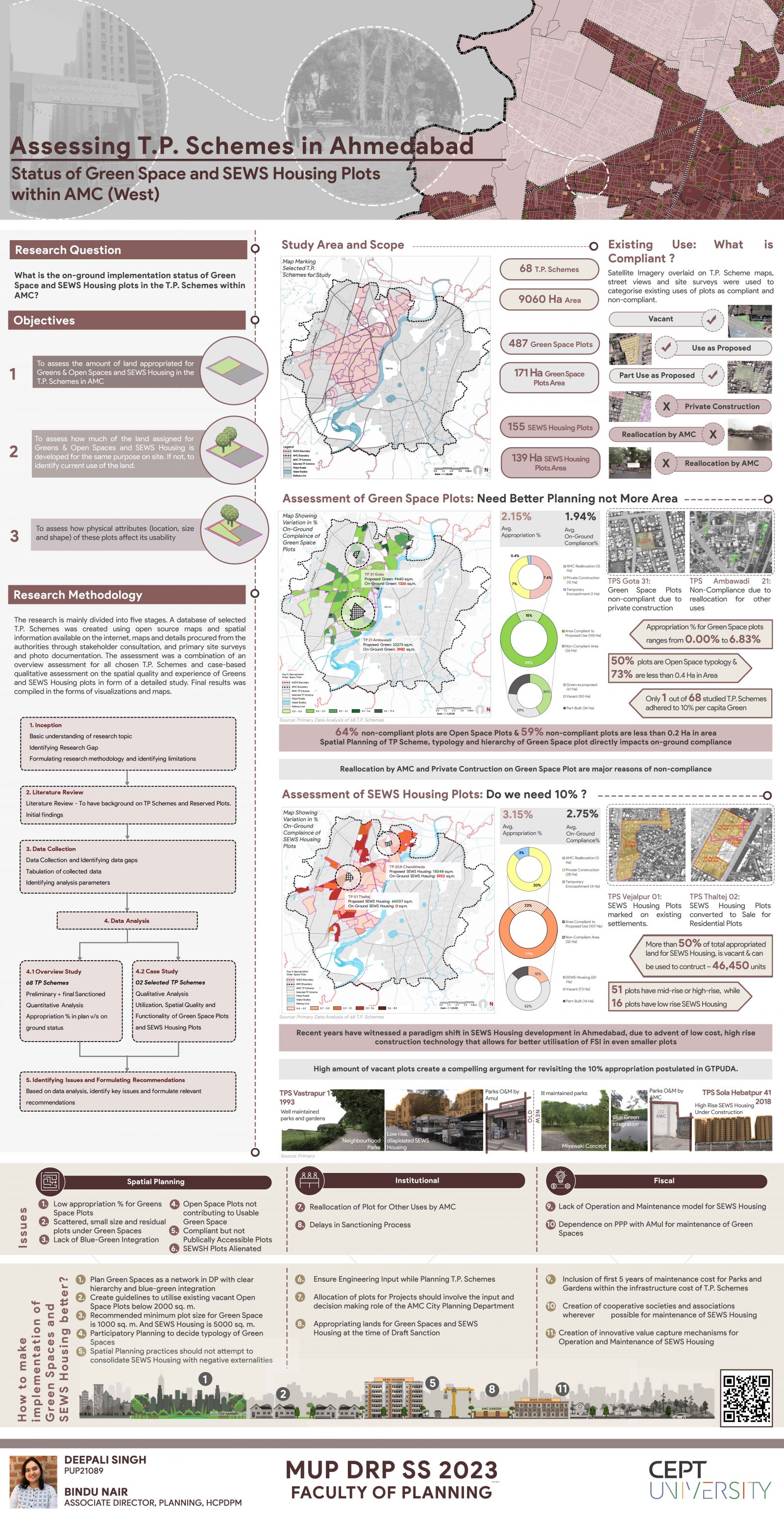Your browser is out-of-date!
For a richer surfing experience on our website, please update your browser. Update my browser now!
For a richer surfing experience on our website, please update your browser. Update my browser now!
The T.P. Scheme mechanism of Gujarat is celebrated across the nation as one of the most efficient, transparent and democratic mechanisms of land management. In addition to creating serviced urban land, it also creates land for Green Spaces and building SEWS Housing. This land is available in the form of well distributed plots of land in the various T.P. Schemes of Ahmedabad. Once appropriated, development of each plot for its intended use is a separate process and project in itself. Therefore, this research assesses the on-ground status of these appropriated plots by looking at three aspects. First, the amount of land that was appropriated for Green Space and SEWS Housing. Second, the amount of land actually compliant to the proposed use on-ground. And third, the impact of physical attributes of a plot such as its location, size and area on its utilisation and functionality. Since no two land parcels are same, a myriad of challenges to T.P. Scheme implementation on-ground emerged, some as a direct result of loopholes in the mechanism and spatial planning while others acting as a domino effect of various other factors. These challenges are observed and rationalised through a lens of West Ahmedabad, which is often touted as the more balanced, organised and liveable half of the city. The research identifies, categorises and tries to find solutions to few key issues plaguing the implementation of Green Space and SEWS Housing projects on land appropriated through T.P. Schemes. The intent is for this research to act as a base for other future researches that can eventually culminate into making the T.P.S Mechanism even more efficient and transparent not just at the stage where appropriation of land takes place but also at the stage where appropriated land is actually turned into usable, accessible infrastructure.
